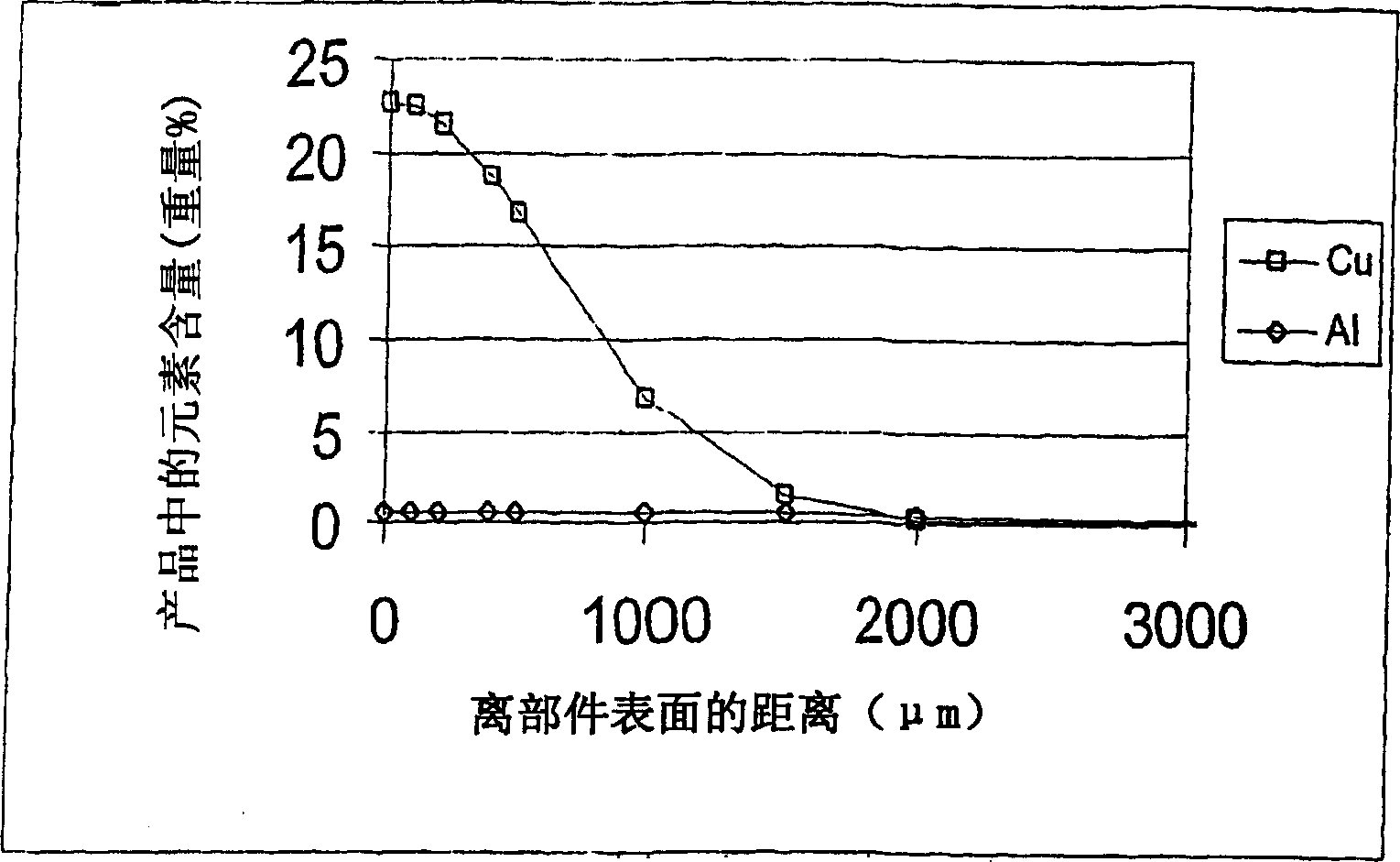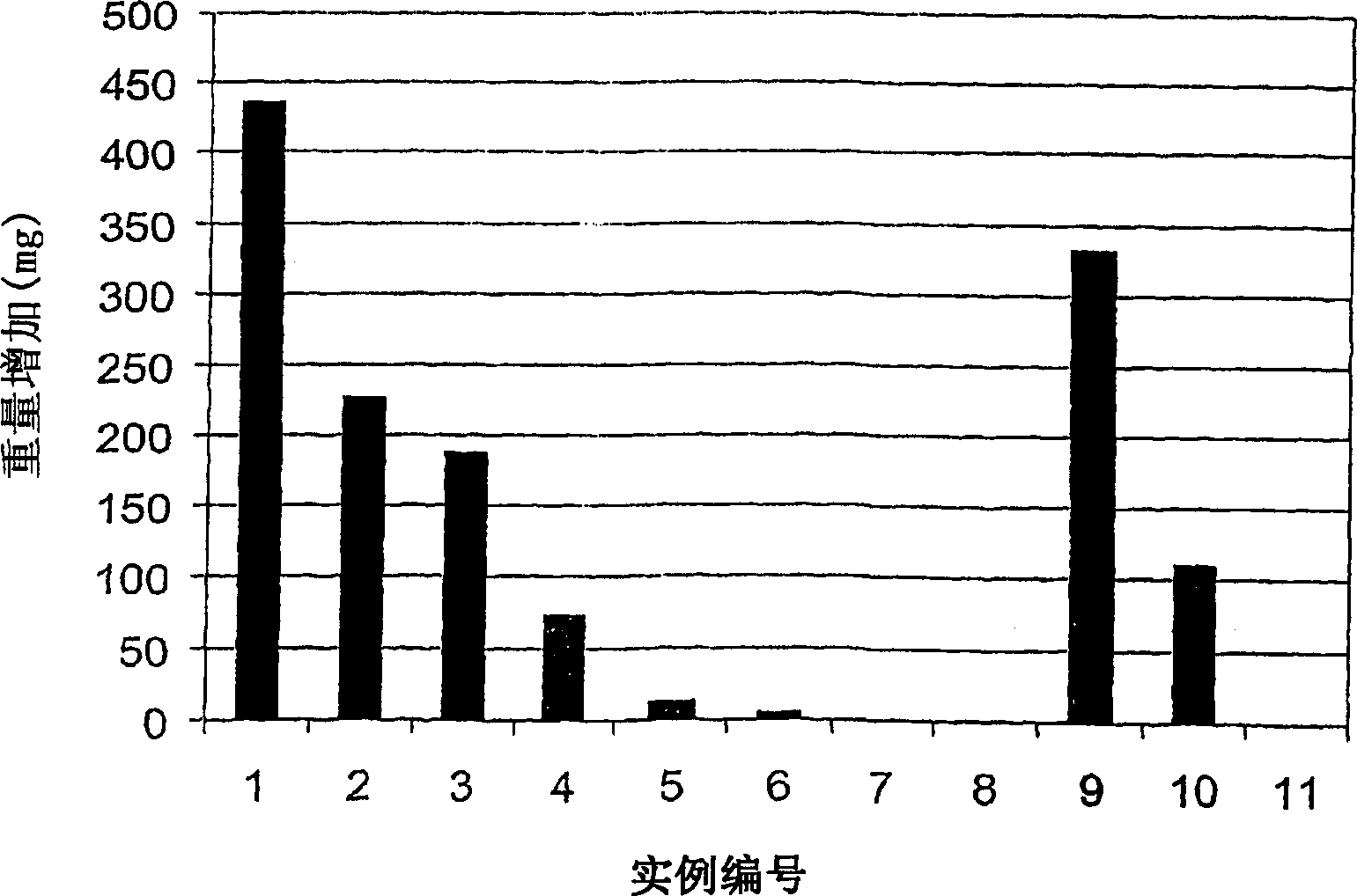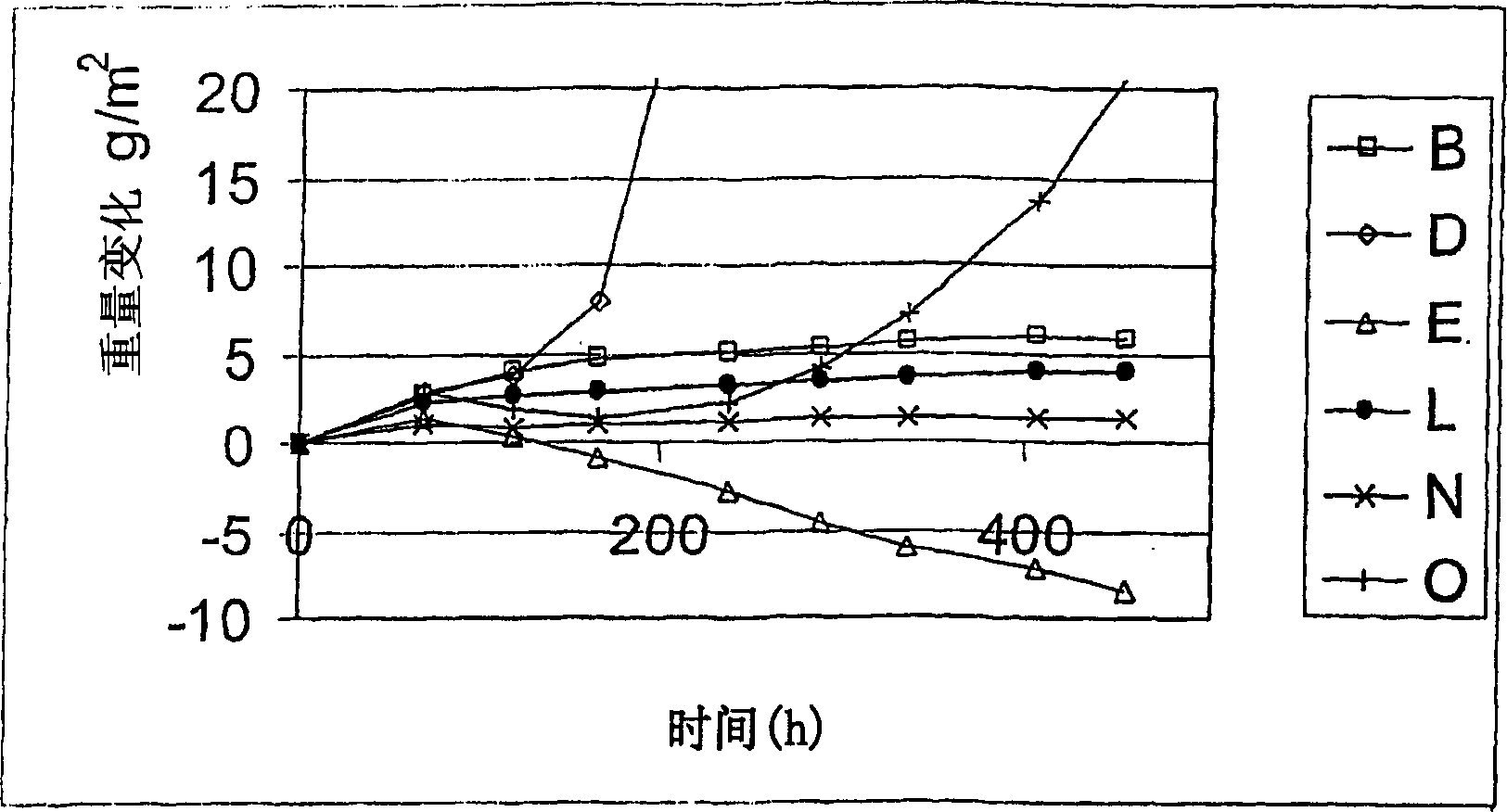Metal dusting resistant product
A technology of metal ash and products, applied in the structural field of components, can solve problems such as short-term effects
- Summary
- Abstract
- Description
- Claims
- Application Information
AI Technical Summary
Problems solved by technology
Method used
Image
Examples
Embodiment 1
[0078] Static laboratory experiments were carried out in a tube furnace with a strong coking atmosphere. The metal graying resistance of standard quality stainless steel and the Cu-based alloys A to M of the present invention was tested and evaluated. Table 1 shows the chemical composition of the materials studied, and Table 2 shows the composition of Embodiments A to Q of the present invention. All contents are given in % by weight.
[0079] Case number
[0080] Al
[0081] Test samples were cut from plates or rods into cuboids with dimensions of approximately 10 x 12 x 3 mm and ground with a 600 mesh sieve. Some test samples passed 1.8MHNO at 50°C for 8-40min 3 +1.6M HF standard pickling operation, or electropolishing operation (50g CrO 3 +450ml orthophosphoric acid, 20V) for surface treatment. Samples were cleaned with acetone and placed in a cold furnace prior to testing. In order to achieve a low oxygen partial pressure, the kiln was flushed w...
Embodiment 2
[0086] Alloys of Examples B-O, having the compositions of Table 2, were prepared by melting under an argon atmosphere followed by casting.
[0087] When exposed to an oxidizing atmosphere in the temperature range of 300 °C to 1050 °C, these alloys can form protective alumina or mixed aluminum oxides, which inhibits further oxidation of the alloy and inhibits the evaporation of copper in the alloy, so that the alloy is resistant to Material loss caused by copper evaporation is more resistant. This is illustrated in Table 4, which shows the average weight change per hour (g / (m 2 h)), it can be seen that the difference between the different alloys at 450°C and 550°C is very small.
[0088] Alloy D is significantly less oxidized than other alloys at higher temperatures. The oxides formed on Alloy E flake off easily during cooling from 850°C. attached image 3 The graph shows the superior oxidation resistance of Alloys B, L and N at 850°C. The results show that for the alloy t...
Embodiment 3
[0092] Alloy Example Q, having the composition of Table 2, was prepared by melting under an argon atmosphere followed by casting. The alloy was exposed to CO gas at 600 °C and 230 mbar for 465 h. CO gas is originally composed of isotopes 13 C and 18 CO molecules and isotopes composed of O 12 C and 16 A mixture of CO molecules composed of O. by determination 13 C 18 O and 12 C 16 O to 13 C 16 O and 12 C 18 The conversion rate of O can determine the catalytic activity of the alloy for CO breakdown and recombination. Decomposition reactions are considered to be important as the first step in any metal ashing, carburizing and coking process. attached Figure 4 Shown is the measured by mass spectrometry, in the presence of alloy Q 13 C 18 O and 12 C 16 O conversion. For comparison, with Figure 5 Shown is the conversion of the same gas in an empty furnace. The kiln material is silica. There was no significant difference between the catalytic activity of Alloy ...
PUM
| Property | Measurement | Unit |
|---|---|---|
| thickness | aaaaa | aaaaa |
| thickness | aaaaa | aaaaa |
| thickness | aaaaa | aaaaa |
Abstract
Description
Claims
Application Information
 Login to View More
Login to View More - R&D
- Intellectual Property
- Life Sciences
- Materials
- Tech Scout
- Unparalleled Data Quality
- Higher Quality Content
- 60% Fewer Hallucinations
Browse by: Latest US Patents, China's latest patents, Technical Efficacy Thesaurus, Application Domain, Technology Topic, Popular Technical Reports.
© 2025 PatSnap. All rights reserved.Legal|Privacy policy|Modern Slavery Act Transparency Statement|Sitemap|About US| Contact US: help@patsnap.com



